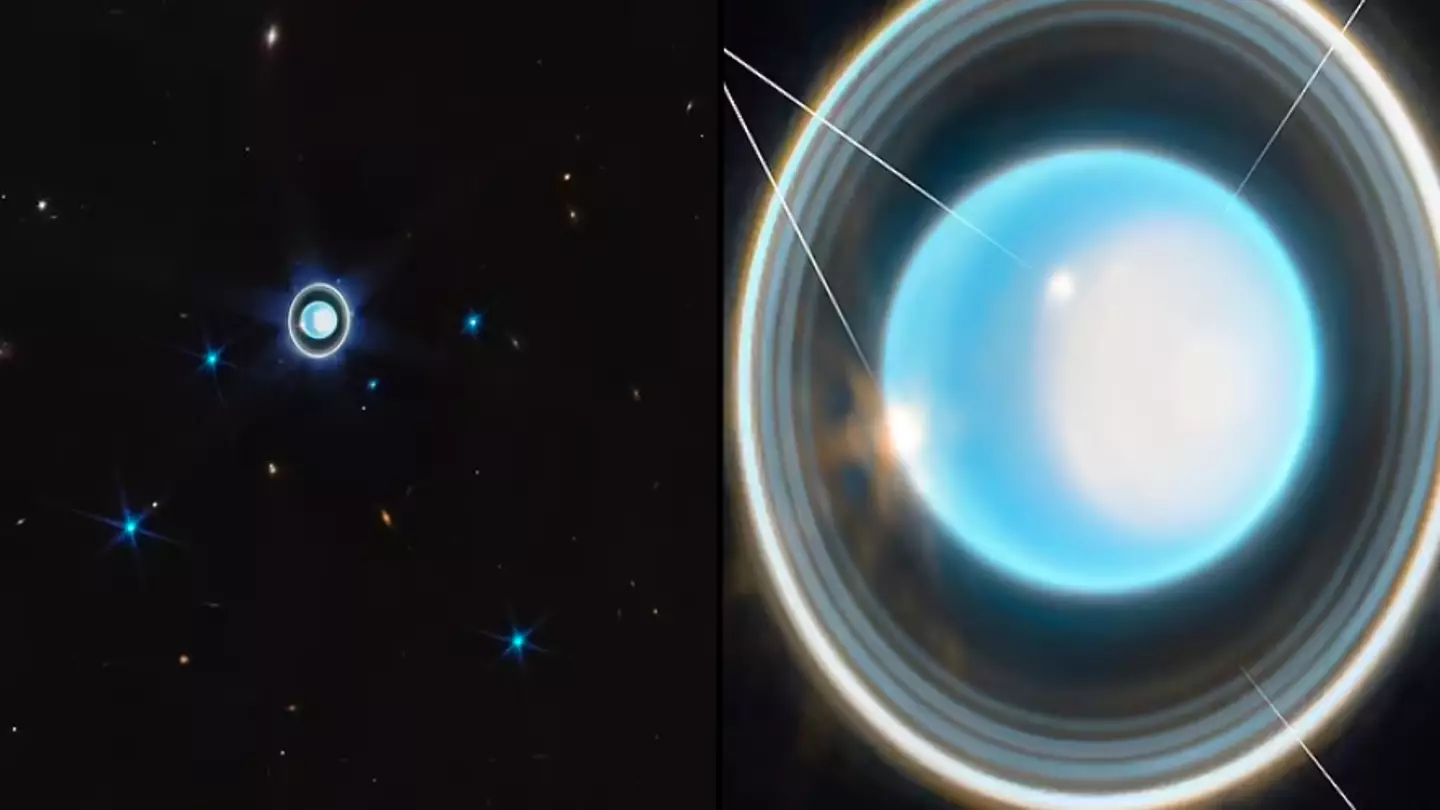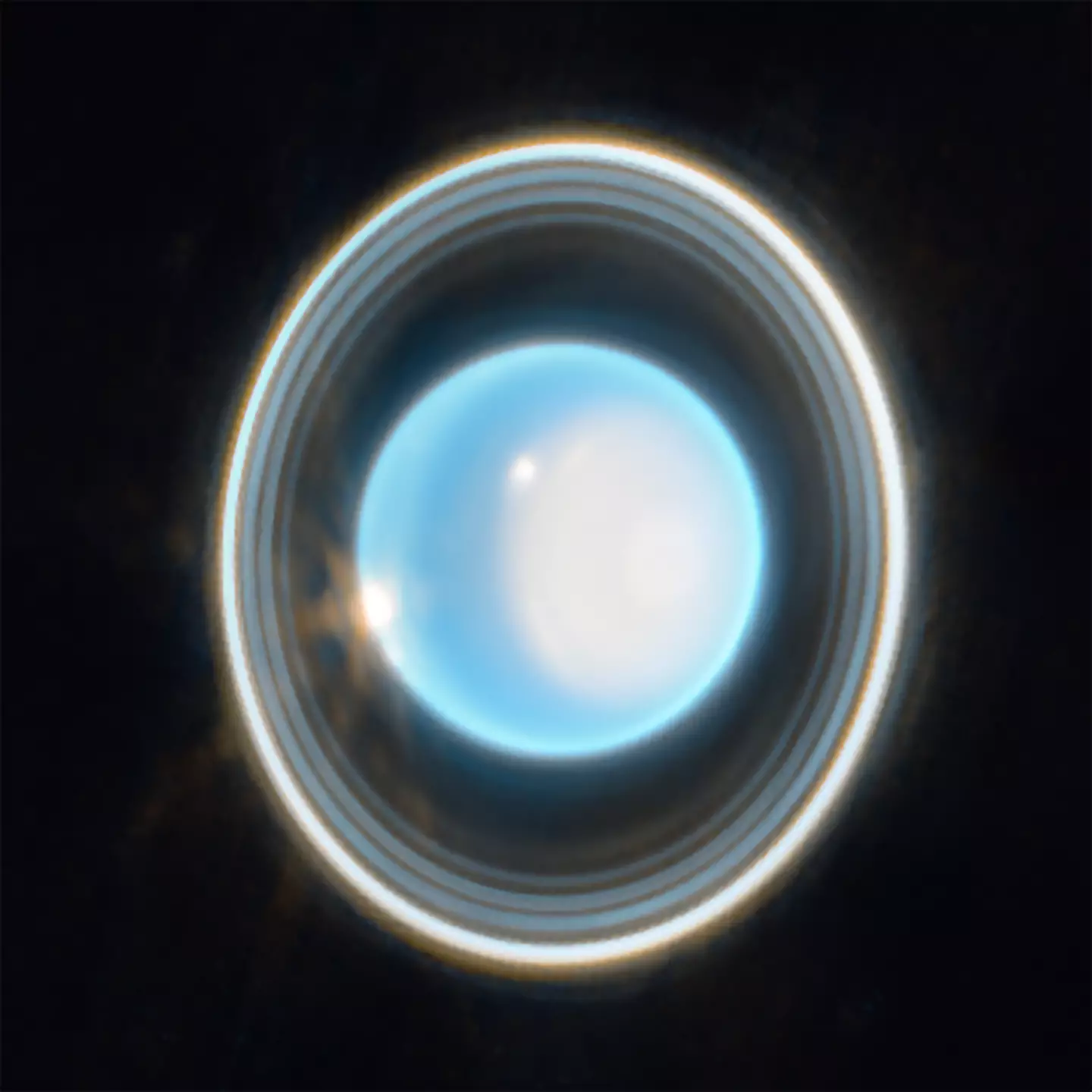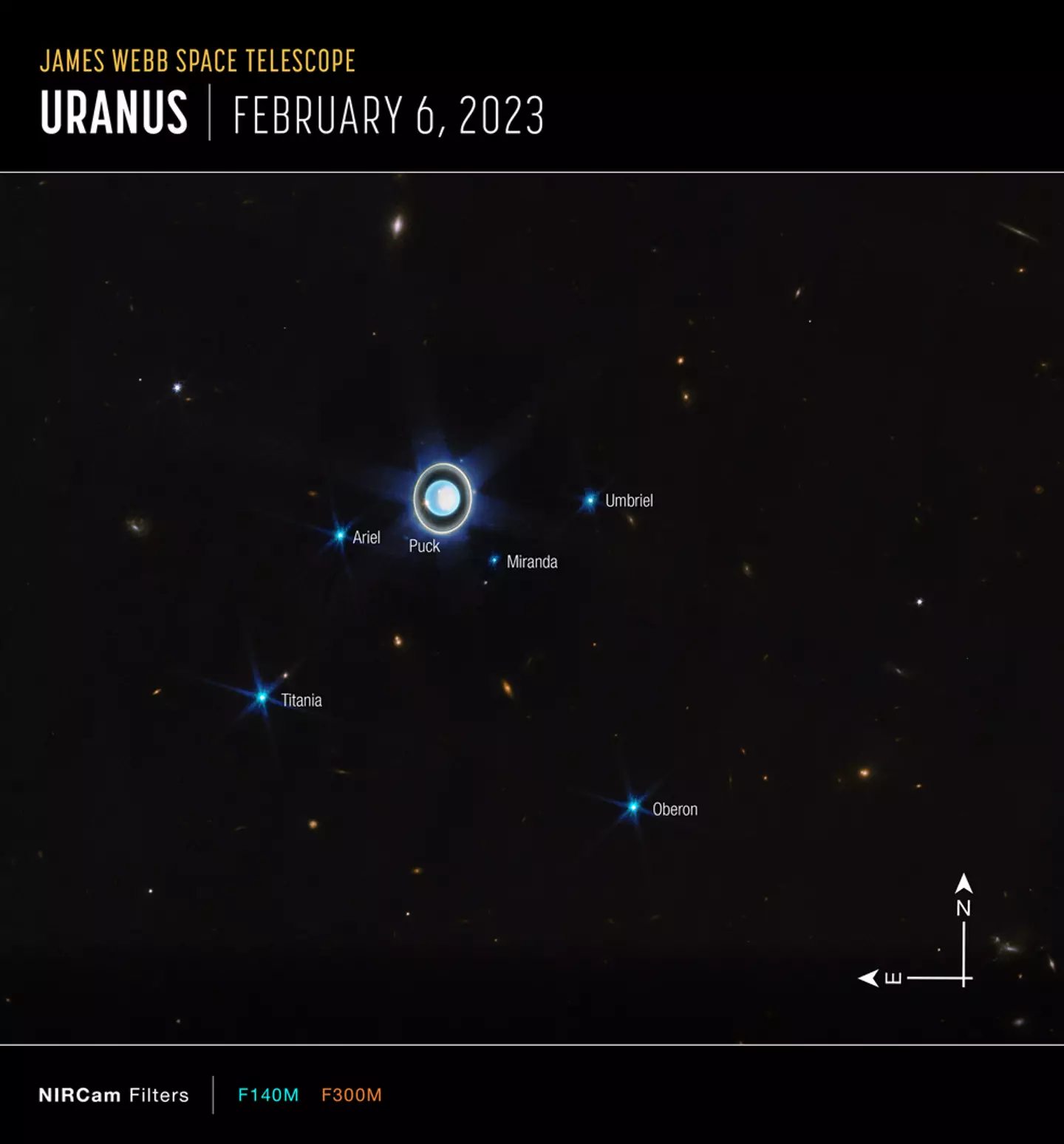
NASA has shared an incredible new photo of Uranus, and said it’s ‘never looked better’... STOP LAUGHING, YOU CHILD.
Uranus is the seventh planet from the Sun, and is unique in that it rotates on its side at roughly a 90-degree angle from the plane of its orbit.
According to NASA, this causes extreme seasons as the planet’s poles experience many years of constant sunlight, followed by a number of equal years of total darkness.
It’s currently late spring for Uranus’ northern pole – visible in a brand new photo captured by the space agency using the Webb Space Telescope, which also shows its stunning ‘dramatic rings’.
Advert
While the rings have been imaged twice before – via the Voyager 2 spacecraft as it flew past in 1986, and the Keck Observatory – it has never been achieved as clearly as Webb’s first glimpse.
NASA couldn’t help but feel the latest efforts are the best, tweeting: "Uranus has never looked better. Really.
"Only Voyager 2 and Keck (with adaptive optics) have imaged the planet's faintest rings before, and never as clearly as Webb’s first glimpse at this ice giant, which also highlights bright atmospheric features."

A press release from NASA explains how, when Voyager 2 looked at Uranus, its camera showed an ‘almost featureless blue-green ball in visible wavelengths’.
However, with the infrared wavelengths and extra sensitivity of Webb we see much more detail, showing how ‘dynamic the atmosphere of Uranus really is’.
“This planet is characterized as an ice giant due to the chemical make-up of its interior,” it said.
“Most of its mass is thought to be a hot, dense fluid of 'icy' materials – water, methane, and ammonia – above a small rocky core.
“Uranus has 13 known rings and 11 of them are visible in this Webb image. Some of these rings are so bright with Webb that when they are close together, they appear to merge into a larger ring.
“Nine are classed as the main rings of the planet, and two are the fainter dusty rings (such as the diffuse zeta ring closest to the planet) that weren’t discovered until the 1986 flyby by Voyager 2.

“Scientists expect that future Webb images of Uranus will reveal the two faint outer rings that were discovered with Hubble during the 2007 ring-plane crossing.
“Webb also captured many of Uranus’ 27 known moons (most of which are too small and faint to be seen here); the six brightest are identified in the wide-view image.”
NASA added: “This was only a short, 12-minute exposure image of Uranus with just two filters.
“It is just the tip of the iceberg of what Webb can do when observing this mysterious planet. In 2022, the National Academies of Sciences, Engineering, and Medicine identified Uranus science as a priority in its 2023-2033 Planetary Science and Astrobiology decadal survey.”
The space agency said additional studies of Uranus are happening now, with more planned in Webb’s first year of science operations.